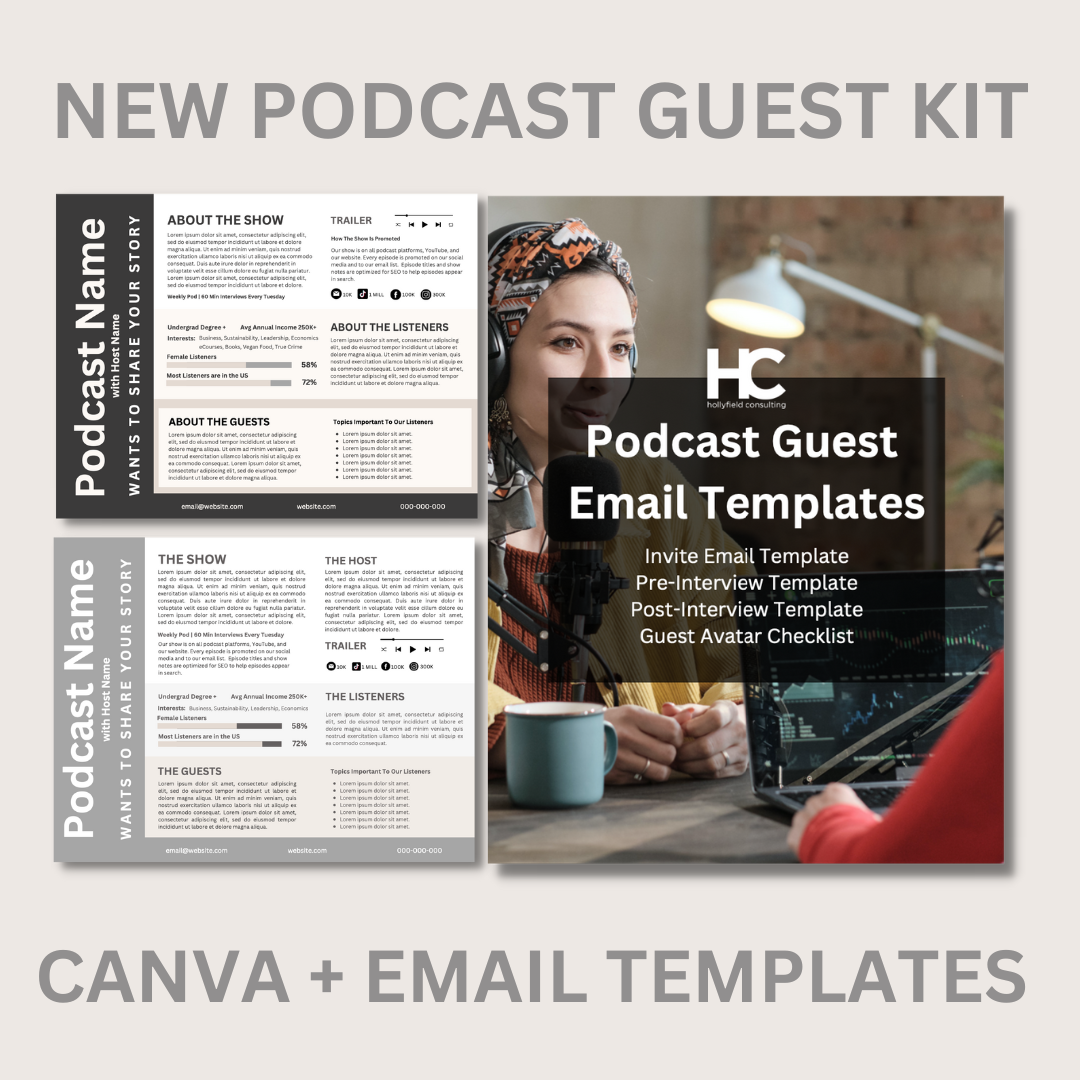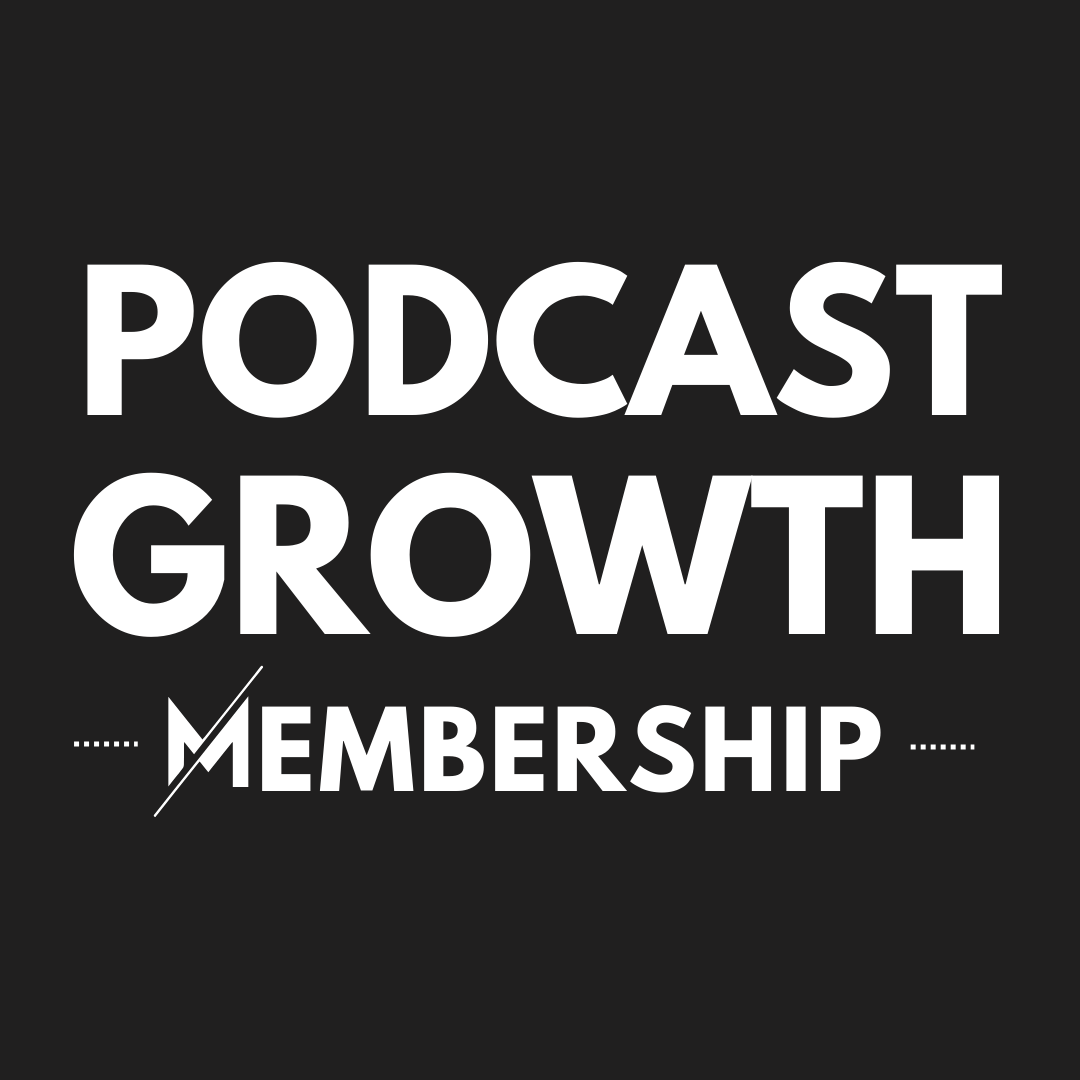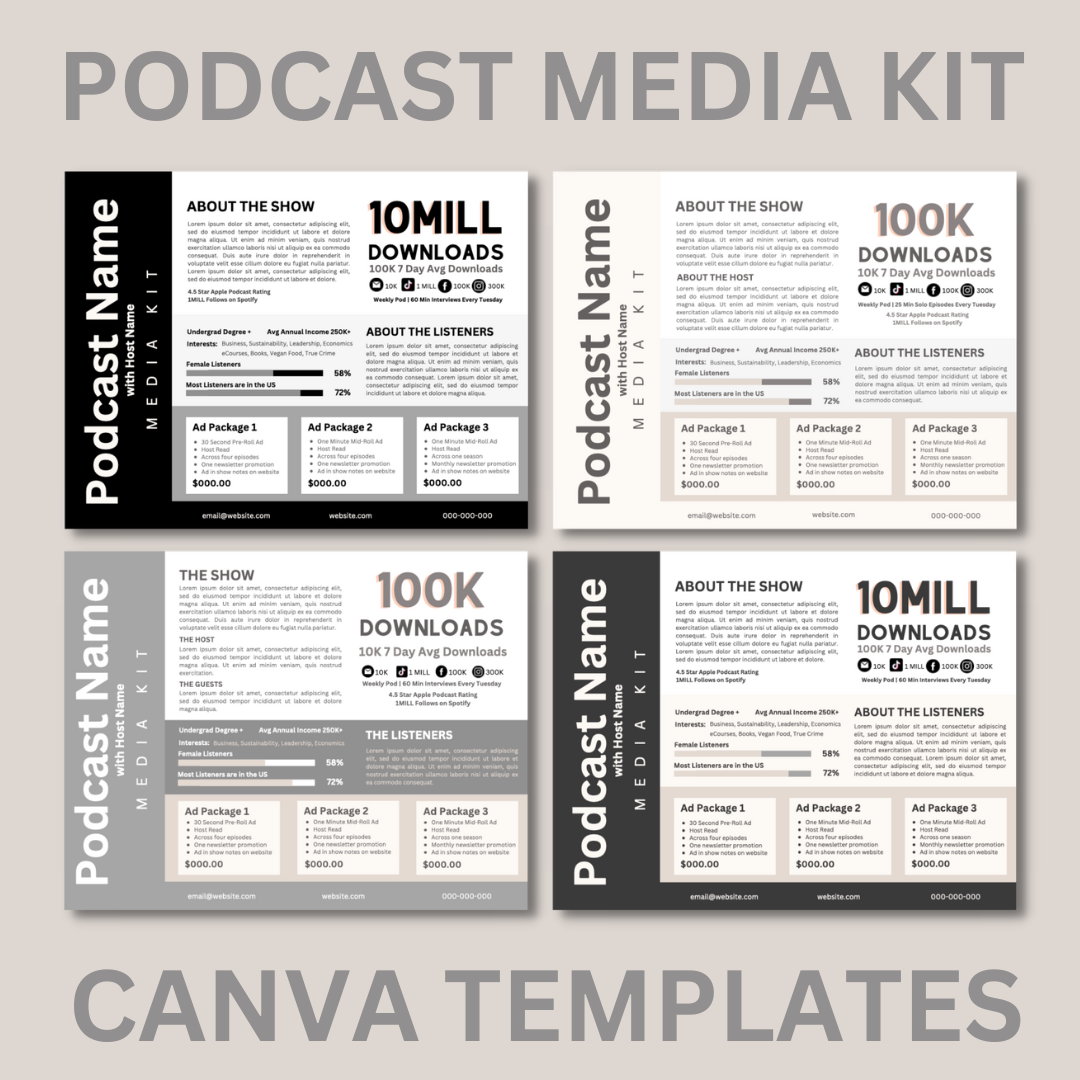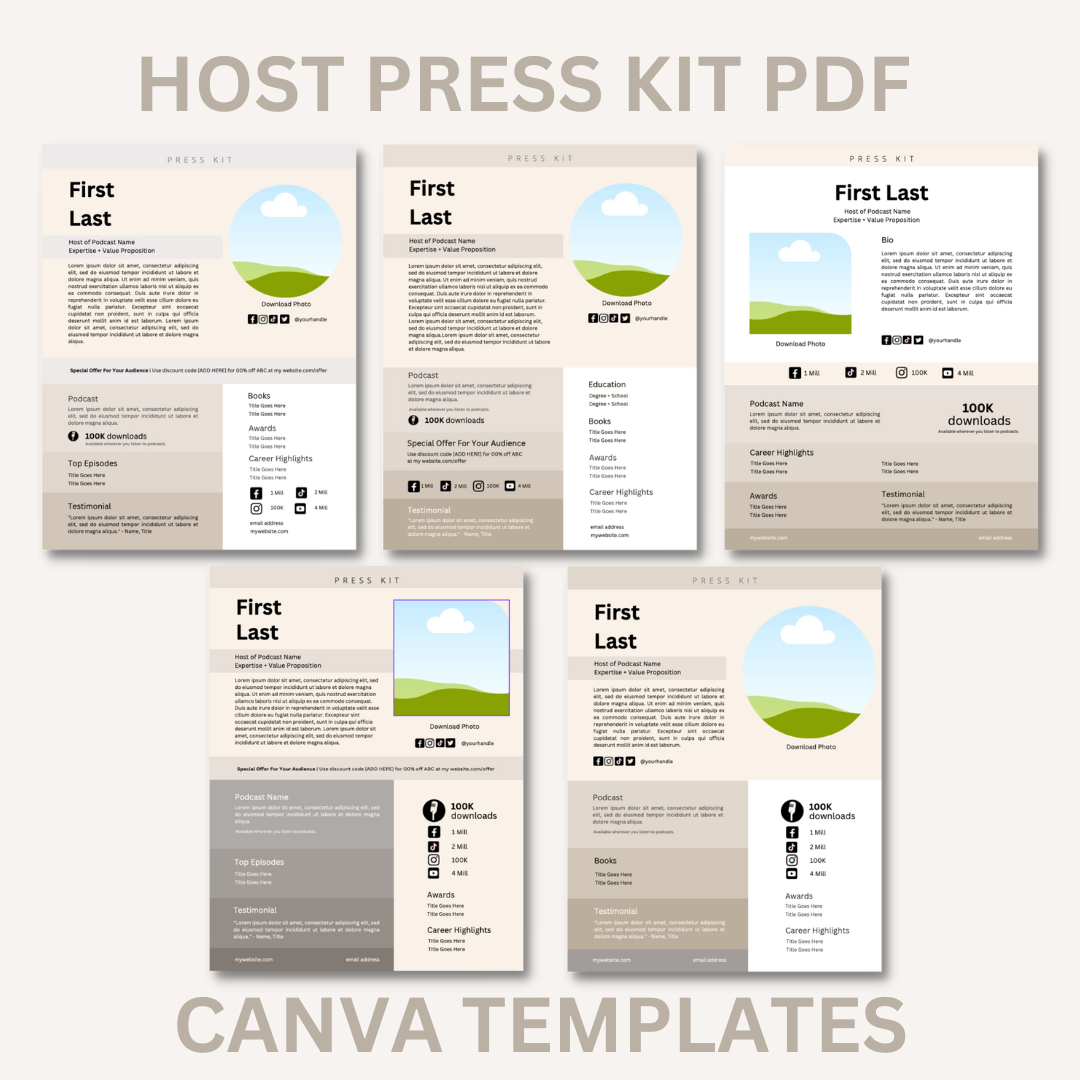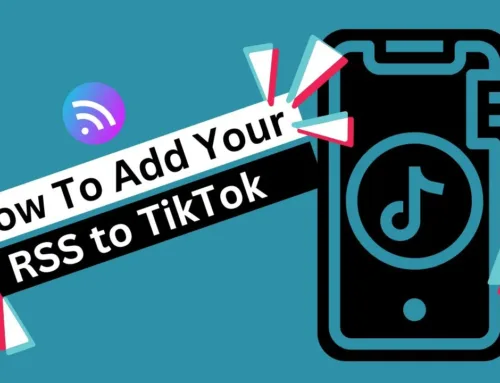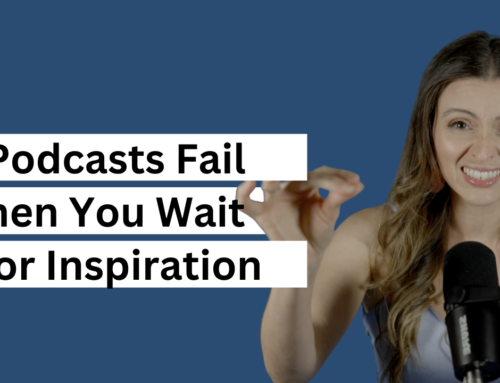I’m sure you’ve heard the Maya Angelou quote, “… people will forget what you said, people will forget what you did, but people will never forget how you made them feel.” Or have you gotten into an argument with someone and said, “It’s not what you said; it’s HOW you said it.”
We communicate with more than words – our body language, vocal inflection, how we set up conversations, and then the words we use all play a role in how we are received.
That’s why you can’t ignore tone when creating content, whether it’s written, audio, or video. When you write, the tone is found in your chosen words, how you present ideas, and the feeling it gives the reader.
When you record audio, tone pours through the words you use and the inflection in your voice, influencing how the listener feels. And when you do video, the tone is in all of the above, plus your body language.
Do you see a theme? The tone is everything you do that impacts how your message is received on the other end.
What is the difference between a brand voice and tone?
Your brand voice is your brand’s personality. The tone is the application of the brand’s voice. The brand’s personality is typically unchanging, but the tone might change slightly depending on the message you deliver.
For instance, if your brand’s personality is goofy, it would not be appropriate to have a goofy tone when honoring veterans. Again, tone influences how the person on the other side of your message feels. The tone is HOW you say something.
Tone and voice play two different roles. For example:
- A brand’s personality might be rugged and outdoorsy, while the tone might be authentic and direct.
- A brand’s personality might be serious, but the tone might be soft and tender.
- A brand’s personality might be professorial, but the tone might be light-hearted and silly.
Next steps:
- What is your brand’s personality? If you are your brand, this is pretty easy!
- Is your brand personality showing up in your audio, video, and written content? When this ties together across platforms, you keep and attract the right people.
What is tone, and why does it matter?
The tone is the impact of your brand’s voice. You establish the tone for your content based on your brand’s values, personality, and how you want your ideal client or listener to receive your message.
Suppose brand values include acts of service and zero judgment. In that case, when you write or record content, the result might have literal things your audience can do to change their circumstance, and you will carefully use language that meets them where they are without judgment.
In other words, tone sets parameters for how you create and deliver content. Establishing a tone for your brand voice – from your podcast to your social posts – allows you to evaluate your message and keeps you producing content that aligns with your values.
Even if you are a thought-leader and YOU are your brand, the voice/personality and tone you use across all your public content likely have stricter guidelines than how you operate in the everyday world. Writing this down helps you control how you want to be perceived as you create new media.
Tone can tell you if your message needs to be more – optimistic, vulnerable, brutally honest, soft, or even goofy.
Next Steps:
- Establish your brand values if you haven’t already.
- Determine how you want the person listening to your podcast to feel.
- After you’ve identified your personality, values, and the feeling you want your audience to experience, set parameters for the tone of your content.
- Create your brand voice and tone matrix using the example below.
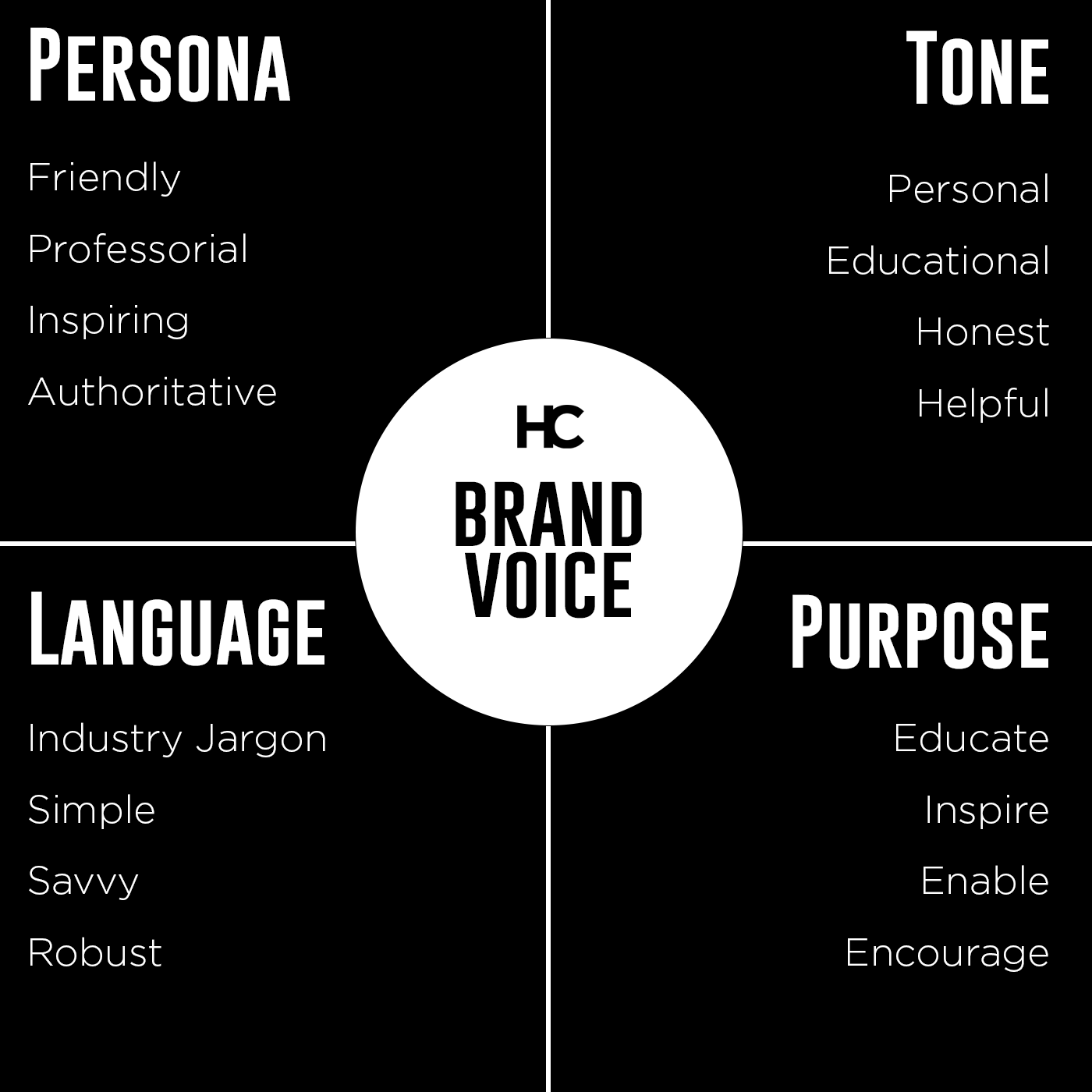
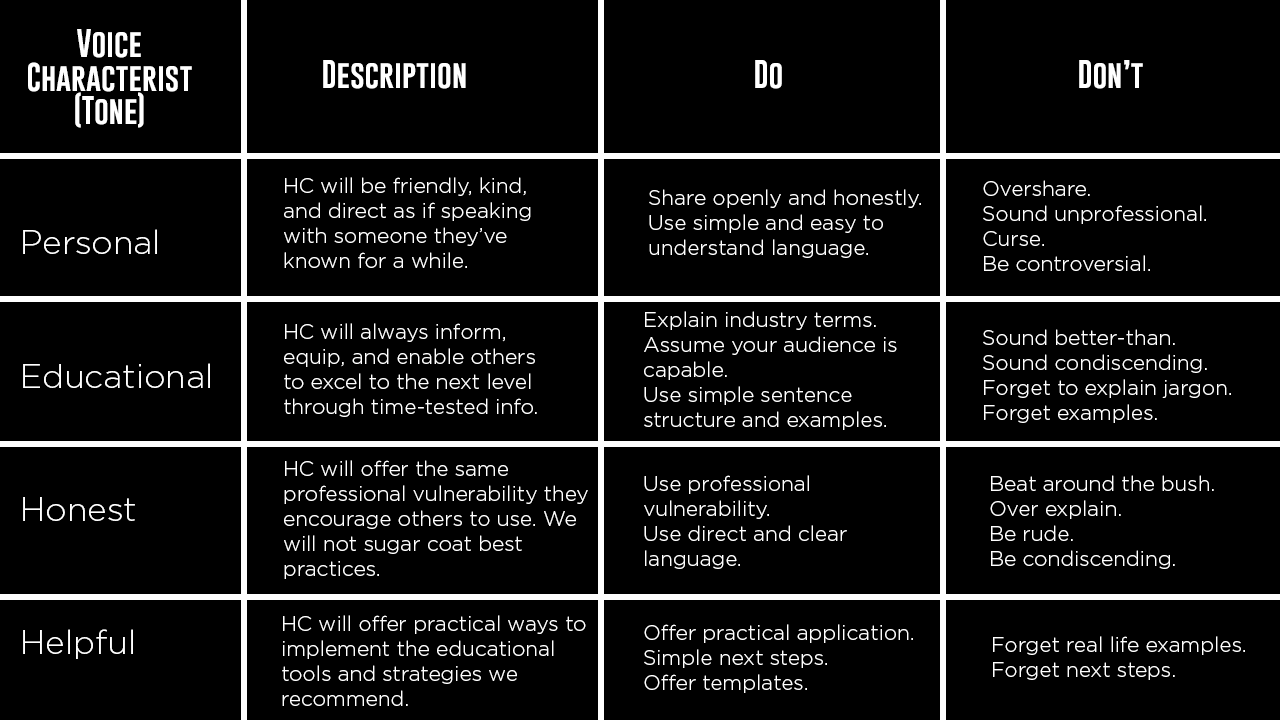
What does tone tell your audience?
Tone can do a whole lot more than supporting the brand’s personality. As I mentioned in the last section, the tone of your content can enforce your brand values and message. At the beginning of this article, I encourage you to establish your brand values and let that inform tone. That is because creating a consistent tone sets a plumb-line through content that says a lot about who you are.
Voice and tone humanize your brand.
For example:
- A brand that values inclusivity and acceptance with a professorial voice might develop a direct tone that uses inclusive language while educating its audience and encouraging guests to do the same.
- A brand that values honesty and integrity with an inspiring voice might develop a hopeful tone by consistently sharing a hero’s journey that openly shows the hero’s mistakes/thoughts/feelings.
- A brand that values kindness with a gentle voice might develop a tone that creates a warm place for its audience to be encouraged by giving guests lots of space to share how they feel without ridicule.
Like in everyday life, tone reveals a lot about how you feel toward a subject or experience. For example, I could say, “I had a great time.” with a smile, which might sound positive. Or, I could say, “I had a grrreat time…” and roll my eyes, making it sound sarcastic.
When we keep the tone we want to achieve in mind, it can dictate how we engage in our interviews or set up solo episode content.
There is a reason I record light-hearted audio ads with a smile on my face and make hand gestures – it influences my tone!
There is a reason I set the mood in my office when I’m going to do an interview. I get comfortable, make sure I have my favorite drink, get my diffuser going, and create a warm environment where I feel comfortable and confident. I also ensure I have the episode’s direction in mind before hitting the record button. I set the tone well before speaking because it will pour out of me.
The tone starts with intention, preparation, and a clear direction.
Next steps:
- What tone does your content currently have? How do others feel while listening to your podcast? Is this the tone you want?
- Double down on how you want people to feel after experiencing your content and work on your brand voice and tone matrices based on your values.
- How do you prepare for your solo episodes or interviews? Create a routine that gets you in the tone zone!
How does tone keep podcast listeners?
In podcasting, tone plays a huge role in why people keep tuning into your message. How you make someone feel is powerful! So if you establish a consistent tone, your audience will continue to listen to get the weekly dose of serotonin they need.
Why do people binge Netflix shows or keep listening to a genre of music? People keep showing up for content that sparks thier nervous system. It’s why we preach felt-need in marketing. Felt-need is not what you perceive your audience needs; it’s what they feel beneath the surface – it’s emotional.
Tone will help you set parameters in interviews and solo episodes, so you pull out the right tone from the content or guest. The tone you hope to achieve might dictate what you do or DO NOT ask your guest. For instance, when you come across a tricky topic, the tone you want to achieve can dictate whether you get raw and deep or light and inspirational.
As the host, you lead the dance for tone through your reactions, questions, and what you choose to share in response.
For instance, if you want your guest to dig deeper, be vulnerable and open about your shortcomings or experiences. Lead the dance and leave the door open for more.
Next steps:
- In the last “next steps” I asked you to evaluate your current tone. I want you to go one step deeper. What about you and your content taps into someone’s nervous system? Really try to understand what you tap into for others when you are being your most authentic self as a host.
- Example: I know I tap into people’s nervous system because I inevitably lean into “you are enough” messaging. Things get personal quick in my consulting process and any content I create. When I keep this intention, I create better content and achieve a tone that is meaningful to me and my audience.
- Practice leading the dance by asking questions that propel the conversation and either being vulnerable or being jovial while being YOU.
Tone In Tough Topics
Discussing abuse is a big example of setting a tone with a challenging topic. When you know you’re going into a raw conversation, setting parameters for tone can be crucial.
I love the saying, “People don’t usually want advice; they want validation.” How you support and validate your guest as they tell their story will set the tone.
For example, let’s say you want to have an honest discussion but leave your audience and your guest feeling seen. The key is how you respond as the host. Give your guest room to tell their hero journey and honor their experience. Praise their process of healing and transformation. Offer love and support to the younger self who walked through something traumatic and did their best with the tools they had.
Ask questions about how your guest overcame or even didn’t. The tone might create an interview setup where you don’t ask your guest the classic, “tell me more,” but “how did you fight that internal battle?” or “What were you thinking at that moment?” or “What would you go back and tell your younger self in that challenging time?” or “What would you tell someone else going through this right now?”
“Tell me more” is usually a key interview question to go deeper, but this may not be appropriate when discussing abuse. Respecting the guest’s experience is everything when discussing abuse or complicated topics. Don’t fill in any gaps for your guest. Parts of their story are likely not hopeful; their transformation might have happened years later. Instead, let your guest tell their hero story as they see fit and praise them for their perseverance.
You can set an encouraging tone simply by praising their transformation, hard work, honesty, and endurance. Just be in awe of them – it goes a long way and sets a positive tone.
Do you see the big picture? How you react to your guest, the questions you ask, and even what you reveal about yourself set the tone in hard interviews. So, when the subject is tough, go in ready to support your guest and praise their journey.
Next steps:
- Create clear parameters for how you create content based on tone for challenging topics. How do you want your GUEST to feel? It will impact how your audience experiences the interview.
- Practice validating someone’s experience. When someone comes to you to vent or share a tough experience, don’t offer advice. Simply validate how they feel and affirm their emotions. Instead of saying, “This too shall pass” or “You might want to…” Acknowledge the hard and give it space. Before you give advice, ask if they have a plan! Then, if they don’t ask if they’d like advice – if you even have any.
Podcast tone cheat sheet:
-
Hopeful or Encouraging Tone:
- Solo Episode: Be honest about your thoughts, feelings, and actions, and then share how you overcame the inner journey that held you back. Tell others what you wished you would have known when you were in the thick of it. Let your audience know it’s possible, they are enough! Validate your experience and theirs by being honest.
- Interview: Be in awe of your guest. Respect their journey. And ask how they overcame.
-
Helpful or Educational Tone:
- Solo Episode: Use examples and storytelling to help listeners understand the concept. If you use a lot of jargon, explain what you think your audience might not know. Fill in the gaps for your listener.
- Interviews: Ask your guest for examples or practical application stories so your guest can get a mental visual and understand them at a deeper level. If you guest uses jargon, ask that they explain if you think it’s something your audience might not know. Ask the questions your listener wants to know and clarify.
-
Personal Tone:
- Solo Episode: Tell stories of your failures, not just victories, and lead with vulnerability. Be honest about your shortcomings and how you pushed forward, changed a mindset, or why you kept failing. Victory stories without the journey don’t help people.
- Interview: Lead with personal vulnerability. You must first share openly and honestly if you want your guests to be authentic and raw.
-
Friendly and Casual Tone:
- Solo Episodes: To go deep on a subject while maintaining a light-hearted perspective, think of your audience as a friend and pretend you’re speaking to this person as your record. Don’t be afraid to be silly.
- Interviews: Go deep on a subject, but don’t be afraid to joke and be silly. Create a genuine friendship with your guests and just be yourself. You don’t need to be a buttoned-up version of yourself, and by being authentic, you open the door for your guest to relax and do the same.
The monthly membership for hosts that want to grow their tribe, downloads, and influence.
The Podcast Growth Membership is a one-stop shop for the strategic insight and easy-to-implement tools you need to grow your podcast. Improve the quality of your show, promote episodes with ease, increase your social presence, and create rinse-and-repeat systems that help you thrive.

10-Day Podcast Growth Challenge | Free Download
There is no secret sauce! Podcast growth is simple, but it’s not easy.
This ten-day challenge will ask you to drill down on your audience and the value you deliver. The truth is if you don’t have a clear message that solves a problem for a specific group of people, it won’t matter how much money you spend or how balls-to-the-wall you go with tactical promotion – your podcast won’t see long-term subscriber growth. This challenge best suits transformation podcasts trying to take someone from A to B.
Grow your podcast and yourself in this ten-day challenge.







